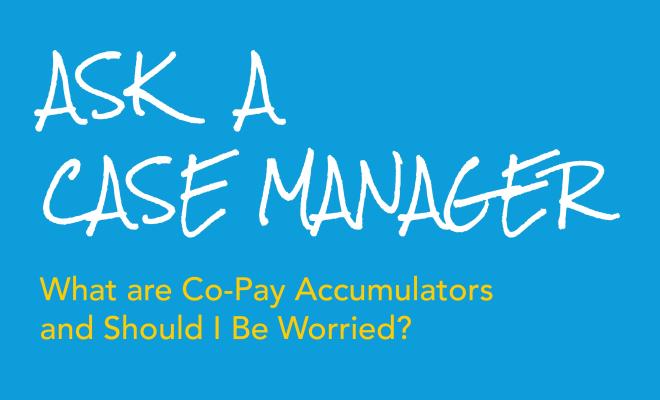There is a new phrase in insurance vernacular. Maybe you've heard it. Or, you've seen it in action when you went to get your last prescription filled. The phrase is copay accumulator; and it can mean big changes to the real-life, out-of-your-pocket costs for care.
What is a copay accumulator?
To help explain what a copay accumulator is, and what its financial impact might be, you need to understand two details of your current health insurance plan:
- What is your deductible?
It is the amount you have to pay before your plan's benefits kick-in - What is your out-of-pocket maximum?
It is the most you will pay in a plan year for covered services before your plan takes over at 100 percent.
The manufacturers of many CF medications have copay assistance programs in place to offset the amount you owe for those medications, also known as the patient responsibility. In the past, some health insurance plans allowed members to count the total assistance received from these programs toward their annual deductible and out-of-pocket maximum. With copay accumulator programs, that's no longer the case.
Here's an example:
In 2018, you filled one of your more expensive prescriptions the first week of January. The copay assistance you received from the manufacturer helped you reach your deductible right away, and even got you to your out-of-pocket maximum. With your deductible and out-of-pocket maximum met for 2018, your plan picked up 100 percent of the cost whether you were filling other prescriptions, going in for a check-up, or getting some other covered service.
In 2019, your coverage stayed the same, but your plan's policy on copay assistance changed. Because of a copay accumulator program, you are no longer able to have the copay assistance you receive count (or accumulate) toward your deductible and out-of-pocket maximum.
To be clear, you can still use the copay assistance you receive. But without the dollar value of that assistance “accumulating,” you may not hit your deductible or reach your out-of-pocket maximum for the year as quickly, if at all.
Bottom line: Your responsibility, the amount that comes out of your wallet for care, may be more. The impact of this change may be felt especially by those with high-deductible plans, high coinsurance or cost sharing, or high out-of-pocket maximums.
Does your plan have a copay accumulator program?
To find out if your plan has a copay accumulator program (sometimes referred to as coupon adjustment, benefit plan protection, or even out-of-pocket protection), start with the plan's Member Handbook or Policy Service Agreement, or contact CF Foundation Compass. A case manager will help you research the details of your current plan, identify any accumulator programs, and identify ways to help pay for unexpected medical costs incurred because of a copay accumulator. Compass cannot provide direct financial assistance, but we can try to connect you to local or national resources that may be able to help free up other financial responsibilities and ease the burden left by a copay accumulator.
What if I want to change my plan?
Everyone, regardless of their plan, will have an opportunity to assess their insurance options during their annual open enrollment period. Compass case managers are here to help you review your plan options and get the information you need to make an informed decision. Otherwise, you are unable to switch plans unless you have a qualifying event such as marriage or a new job.
We know that many people with cystic fibrosis and their families face complicated issues related to getting the care they need. The way copay accumulators are changing the current insurance environment can certainly add to those complications. Compass is here to make sure no one has to navigate these changes alone. Contact a Compass case manager today. A dedicated, knowledgeable CF Foundation case manager is ready to work with you, one-on-one. This expert guidance is free and confidential. Call us at 844-COMPASS (844-266-7277) or email us at compass@cff.org.
Join the conversation on Facebook.





